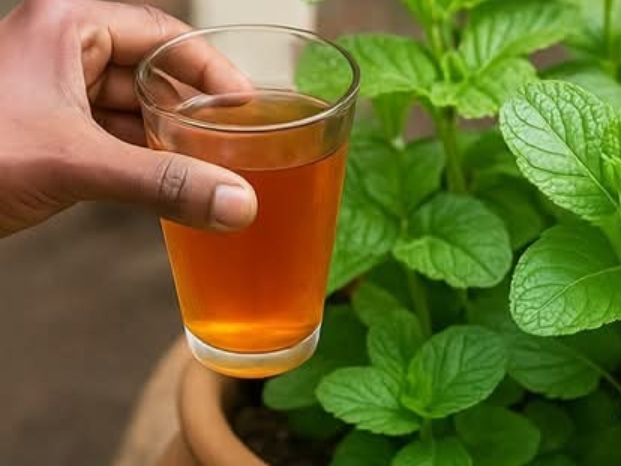Why Mint Thrives Best in ContainersMint is naturally invasive. In the ground, it spreads aggressively, often overtaking nearby plants. But in containers, you control its environment — soil, water, light — allowing it to flourish wildly without invading your garden beds. Containers also help keep pests and diseases in check and let you move the plant as needed.🪴 Start with the Right Mint and Right ContainerAlways begin with a healthy seedling or cutting. Spearmint, peppermint, and chocolate mint are popular, resilient varieties with delicious aromas and flavor.Choose a wide pot rather than a deep one. Mint roots spread outward more than downward, so a shallow but broad container allows room for root expansion and encourages more shoot growth.Make sure your container has multiple drainage holes. Mint is hardy, but it hates soggy roots. Good drainage is critical to prevent rot.🌱 Use Rich, Breathable SoilMint prefers loose, well-draining soil. Use a high-quality organic potting mix. Blend in a scoop of compost for nutrients and add a handful of sand or perlite to boost drainage and airflow through the roots.Avoid garden soil, which is often too dense for potted plants and may contain pests or weed seeds.💧 Water Smart — Not Too Much, Not Too LittleConsistency is everything. Mint likes moist soil but not wet feet.Water when the top inch of soil feels dry. During summer, this could mean watering daily. In cooler months, cut back slightly. Mulching with shredded leaves or bark can help retain moisture and prevent the soil from drying out too quickly.☀️ Give It Gentle Sunlight, Not Harsh HeatMint loves light but doesn’t need blazing sun. Give it 4–6 hours of bright, indirect sunlight a day. Morning sun is ideal. If your mint gets too much direct afternoon sun, the leaves may burn and wilt.For indoor growing, place your pot near a south-facing window or use a grow light to ensure steady light exposure.✂️ The Hidden Secret: Ruthless PruningHere’s what most people never realize — pruning isn’t optional. It’s essential.Start trimming once your plant reaches about 6 inches tall. Pinch off the top tips to encourage lateral branching and fuller growth. The more you trim, the more mint you get.Never let your mint flower. As soon as flower buds appear, remove them. Once mint blooms, the leaves lose flavor and the plant slows down. Regular pinching keeps your mint productive and delicious.🧪 Feed Strategically — Not ExcessivelyMint doesn’t need heavy feeding, but giving it a boost every few weeks will support nonstop growth.Use an organic slow-release fertilizer every 4–6 weeks during the growing season. You can also use a diluted seaweed or fish emulsion to energize tired plants.Overfeeding will lead to soft, weak growth that’s less flavorful, so don’t overdo it.🔄 Refresh Your Plant Annually for Long-Term SuccessMint plants start to lose vitality after a couple of years. By spring, divide the root ball and replant the healthiest sections in fresh soil. This not only rejuvenates the plant but prevents overcrowding and encourages a strong new growth cycle.
The Secret to Growing Endless Fresh Mint in Pots — A Gardener’s Hidden Formula
